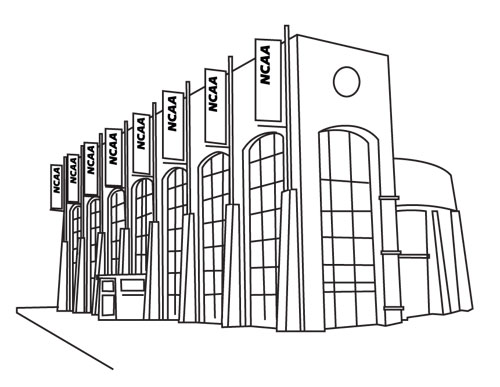
The Future of the NCAA
On the west side of downtown Indianapolis, just before the sprawl of IUPUI, sits a $50 million temple to amateurism. That’s the headquarters of the NCAA, the national organization that tries to keep the “college” in college sports.
Last year proved to be a particularly tough one for that mission. Much of the news surrounding college sports tilted toward scandal—like when Yahoo! Sports revealed how the University of Miami’s football team was running around with prostitutes and involved with a Ponzi scheme. When it wasn’t a scandal, it was a high-minded attack on the NCAA itself. In The Atlantic, Taylor Branch, a Pulitzer Prize–winning historian, called the organization “a classic cartel.” America remains the only country to yoke higher education and big-time sports, and Branch documented how far some had gone to make this lucrative marriage work and to “exploit” young athletes.
The largest universities, for their part, seemed dead-set on proving Branch’s point about exploitation. Last year also saw a number of money-printing football programs drag their schools to bigger athletic conferences—often in search of TV contracts that, at the very top, could exceed $1 billion. “We always keep our television partners close to us,” a Boston College official admitted after his conference poached several teams. “TV—ESPN—is the one who told us what to do.”
Clearly, the NCAA finds itself in a tight spot, with reformers like Branch on one side and the richest football programs on the other. But the organization and its president, Mark Emmert, are attempting to change things for future college athletes. One idea is a “full cost-of-attendance” stipend that would add $2,000 annually to each athlete’s scholarship. “The time demands placed on student-athletes have changed sharply,” Emmert explains. “It’s very hard for students to hold down a job and participate in athletics.”
Emmert believes that, with some tweaking, his agenda will satisfy most universities. And the outsiders like Branch, who want the NCAA to share profits with the players, don’t bother him. “I fundamentally disagree with that approach,” Emmert says. “I consider it the way in which college athletics would end.” He believes it would kill minor sports that depend on revenues from football and basketball. A future where the NCAA pays its players, he says, is a future with 35 college football teams, 60 basketball teams—“and nothing else.”
And that would mean a future with no NCAA. What does Emmert see for the organization 10 years down the line? “My full expectation is that we’ll be more vibrant than ever,” he says, promising less emphasis on arcane regulations. That’s good news for Indy, which benefits from NCAA jobs, its tourist-friendly Hall of Champions, and its stream of local events. But it’s bad news for student-athletes. You don’t have to buy everything Branch is selling to see that the reason students can’t hold a job is because being an athlete is a job—just not one they get paid for.
The money is going somewhere, though. Later this spring, the NCAA will open a $35 million expansion to its downtown headquarters.
This article originally appeared in the March 2012 issue.





